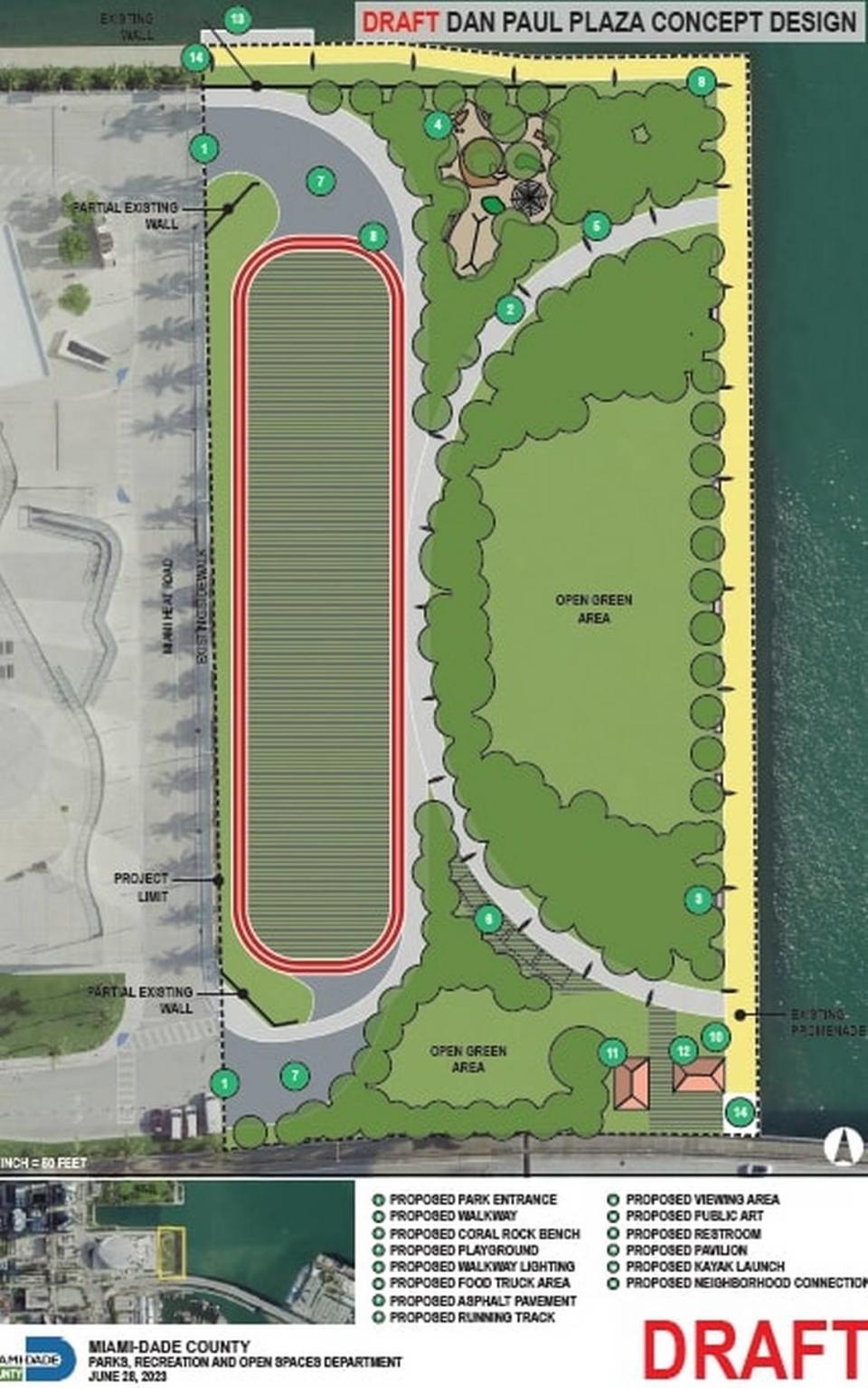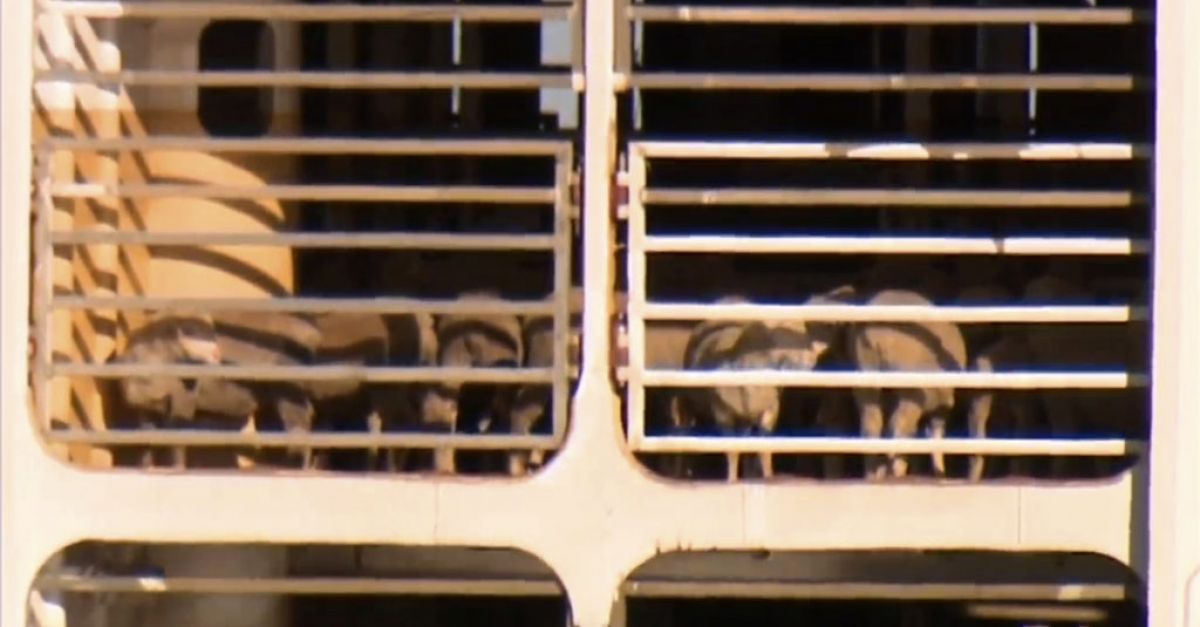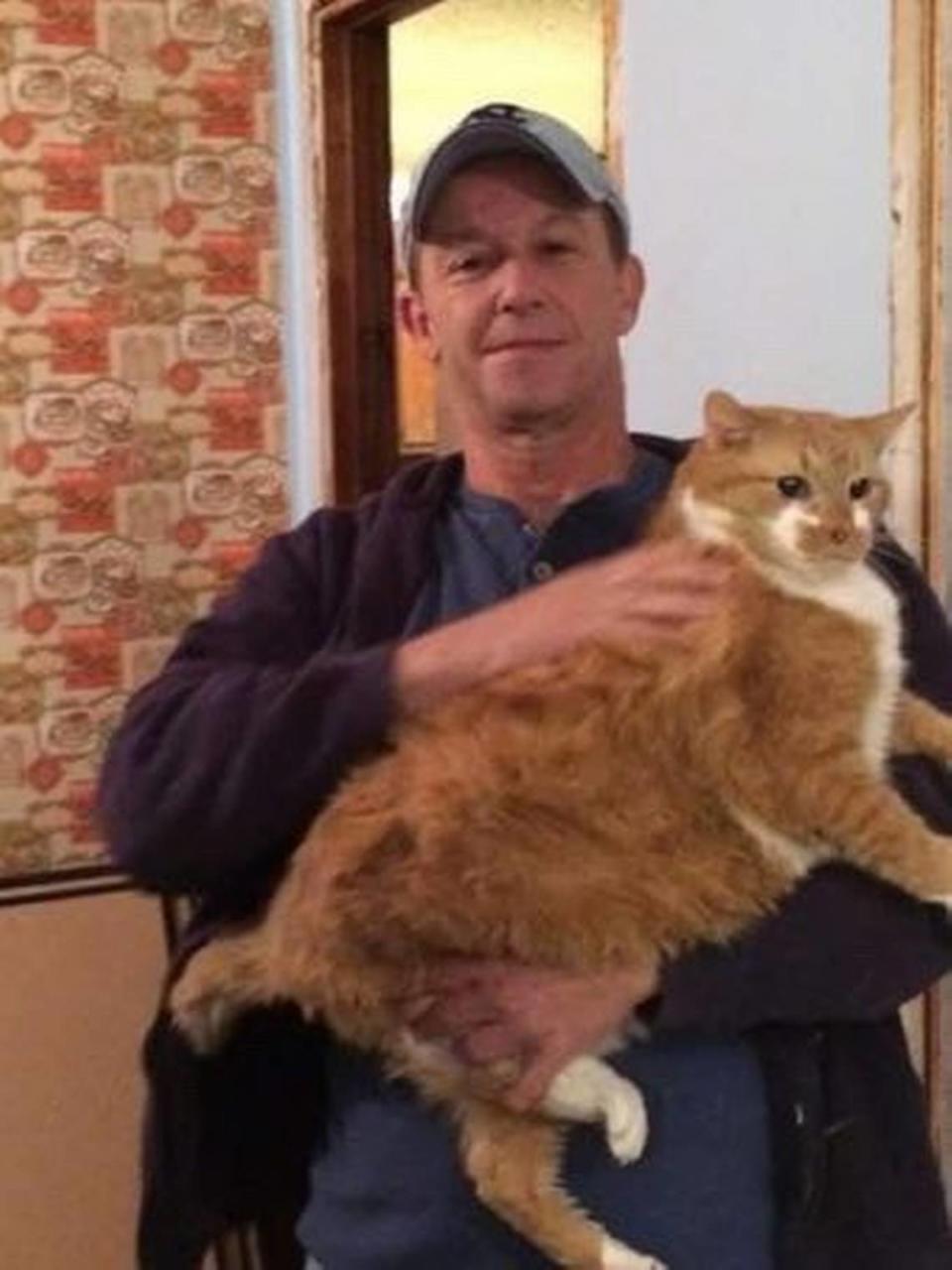Nearly three decades have passed since the Miami Heat pitched voters a waterfront park on Biscayne Bay, only to fence in the public land year after year when the team uses it for parking spaces.
Now the team is negotiating with Miami-Dade County over a plan to convert the 3-acre parcel into a mix of recreational space and temporary parking that could keep the government-owned spot open to the public year-round.
“By making this change into a flex park, it allows the community to gain access after 27 years,” said James Torres, a downtown neighborhood organizer who has met with Miami-Dade Mayor Daniella Levine Cava on the issue. “And it also gives the Miami Heat what they’re needing, which is the staging and parking.”
A county proposal drafted last summer by the Parks and Recreation Department lays out the compromise for the county-owned land best known as Parcel B.
In 1996, the Heat sold residents on the idea of the land as a new downtown park when the team needed votes in the referendum to build an arena on a larger government-owned spot off of Biscayne Boulevard, then called Parcel A.
But the park never came. The land consists of grassy areas upland and an asphalt parking area near the waterfront, often fenced off by metal barricades separating Parcel B from the city-owned baywalk that rings the property.
Parcel B was one of the subjects in the “Broken Promises” series of editorials that won the Miami Herald a Pulitzer Prize in 2023.
In 2019, the Miami-Dade County Commission renamed the property Dan Paul Plaza in honor of the late advocate for county parks. The legislation also declared the Parcel B site “public open space, available for the use and enjoyment of all Miami-Dade County residents and visitors alike.”
That wasn’t the case Friday, when metal barriers discouraged passerby from strolling through the grassy areas of Parcel B. The Heat wasn’t playing at home that day, and a county spokesperson confirmed Parcel B wasn’t rented by the team that day.
“Those fences aren’t ours,” said Natalia Jaramillo, a spokesperson for Levine Cava.
Later that day, a Heat representative said the barriers should have been removed after the prior evening’s game and were cleared out after a Miami Herald reporter encountered them.
“Delay was due to staffing error,” said Lorrie-Ann Diaz, a Heat vice president.
Under the latest proposal, Miami-Dade would rip up the asphalt near the waterfront, plant trees, install a playground and build a walking path, according to the June 28 rendering. The area of Parcel B closest to the arena would become the new parking area for the Heat on game days and revert to recreational use when the arena closes, said Torres, president of the Downtown Neighbors Alliance and a former candidate for the Miami City Commission.

On the rendering, a jogging track surrounds the oval area that would be converted to arena parking as needed, with paved parking areas for the public on either end.
The sticking point may be how much of the land the Heat will accept for overflow parking.
A draft agreement a team lobbyist sent the county in October doesn’t have any of mention of transforming any part of Parcel B into a park. It would give the Heat control of the full parcel when the arena is open, plus require Miami-Dade grant the team 45 days’ notice for the government or an outside group to use the land for their own events.
The agreement also could have the county closing Parcel B for Heat waterfront events, with the notation that private parties on the parcel should be considered “arena events” that require closure. Under the deal, the Heat would pay $2 million upfront to the county in exchange for an agreement that would last as long as the team plays in the arena.
The Heat’s proposed agreement makes no reference to recreational amenities in the county’s rendering of a future Parcel B and doesn’t lay out any requirements for public access during game days.
“The word ‘park’ is never in there,” Greg Bush, a longtime advocate for a Parcel B park, said of the draft Heat deal.
The agreement does spell out protections for public access to the city-owned baywalk that rings Parcel B, a waterfront promenade that’s part of downtown’s Maruice A Ferré Park.
The Herald obtained the document through a records request and shared it with Bush, who now lives in Central Florida but serves as vice president of the Urban Environment League of Greater Miami. “There is a lot of stuff in there, but it has nothing to do with a park. It’s all for the Heat. That’s ridiculous.”
READ MORE: The political strategy behind the Heat promising a park on Biscayne Bay
Heat representatives did not respond to requests for comment.
Commissioner Keon Hardemon, whose district includes Parcel B, said in a statement he supports the team using a “portion” of the land for parking. “The predominant feature will be a world-class park for families to enjoy,” he said.
While details are sparse on where negotiations stand, the administration said in a statement it wants the waterfront portion of Parcel B to shift to a fully accessible public space.
“The County agrees with the neighbors about keeping the waterfront portion … open to the public on Game Days,” Jaramillo said.
A public space on the waterfront behind the arena now named the Kaseya Center got its start as a campaign strategy in the 1990s, according to one of the Heat’s hired political strategists.
Mike Murphy, hired by the Heat to help with the arena campaign before he became a television commentator, said that the team added the park concept to win over non-Hispanic white voters at a time when the arena referendum’s fate was in doubt.
“White voters were most excited about a new family-friendly park on Miami’s waterfront, including soccer fields and a new arena, which would bring in concerts and other entertainment events,” Murphy wrote in a 2004 essay for the Sports Business Journal. “Recasting the arena as a waterfront park and arena was to be key to our campaign.”
Signup bonus from




